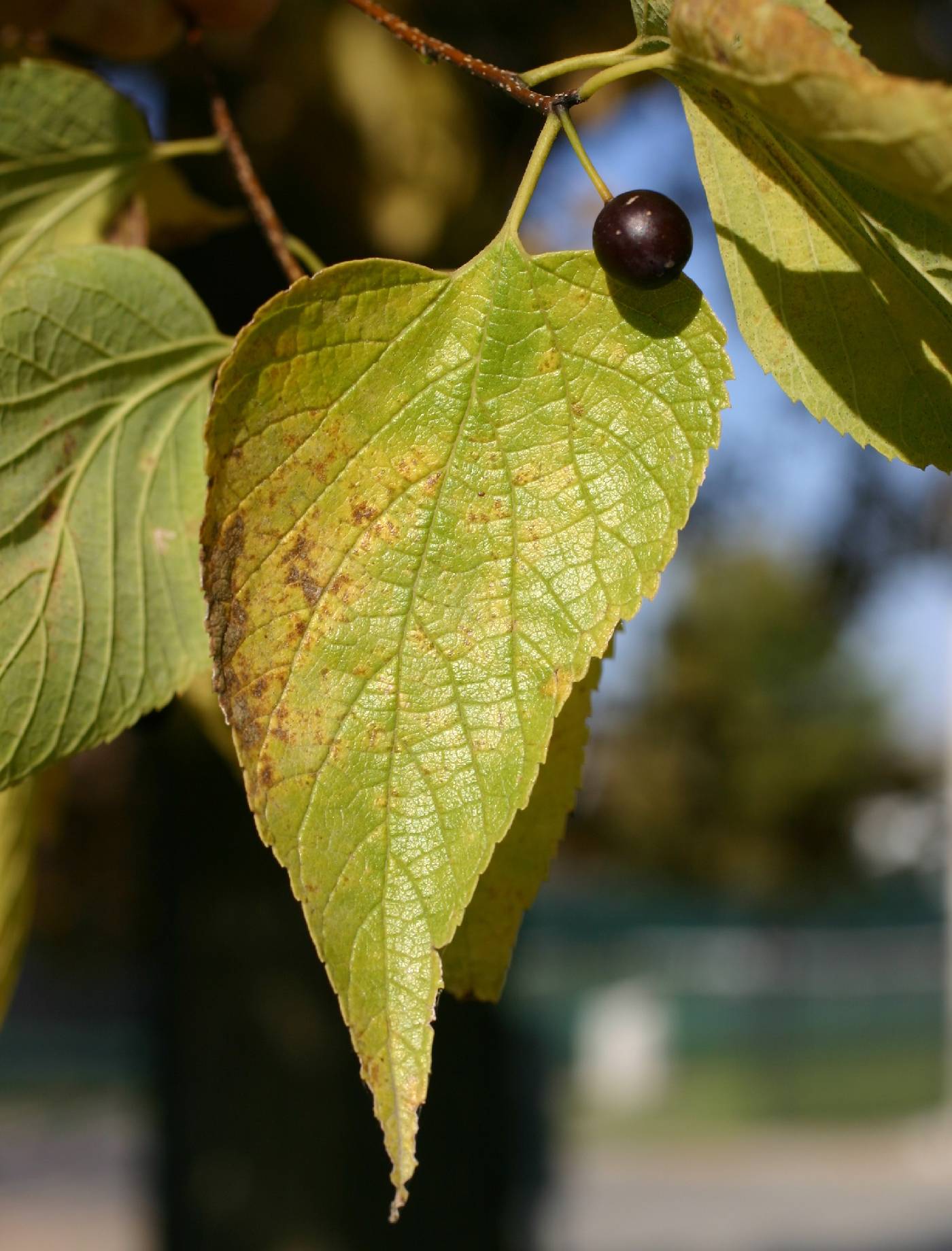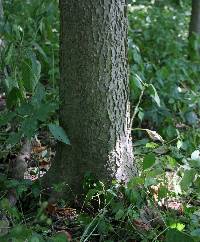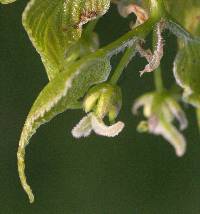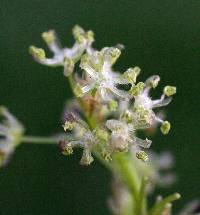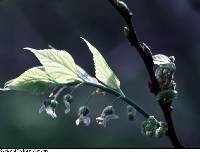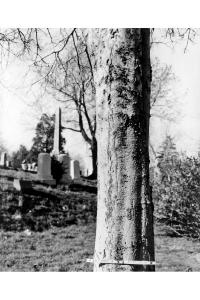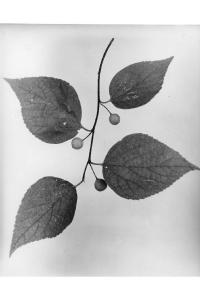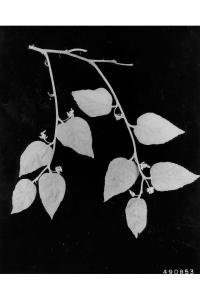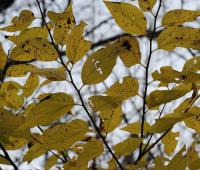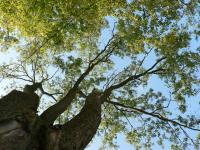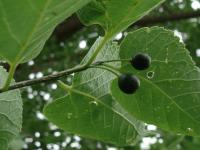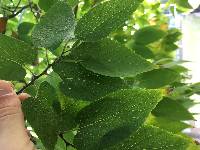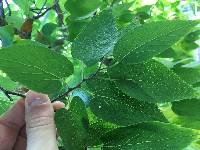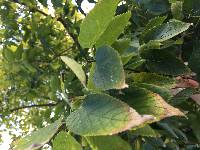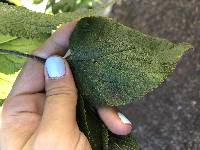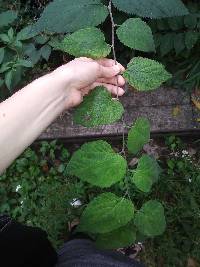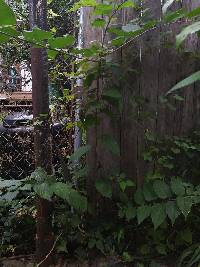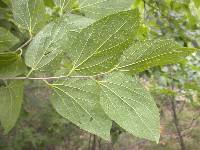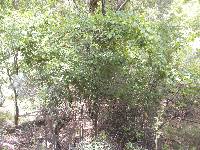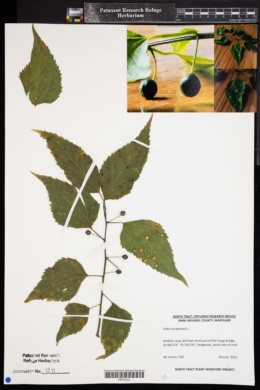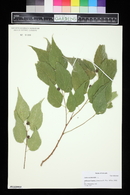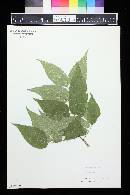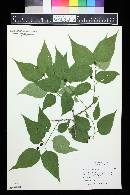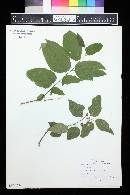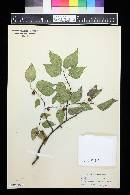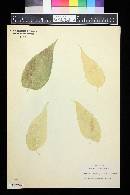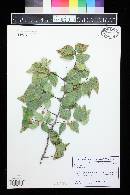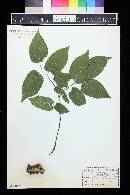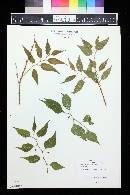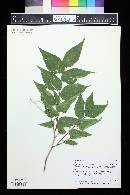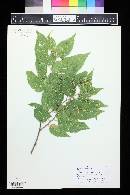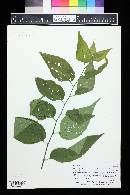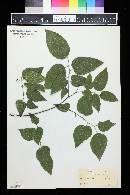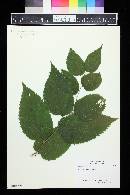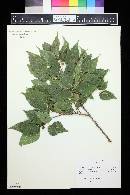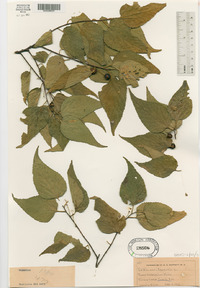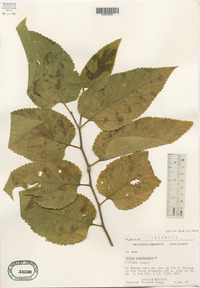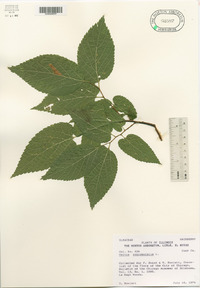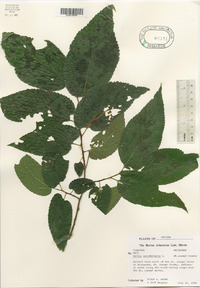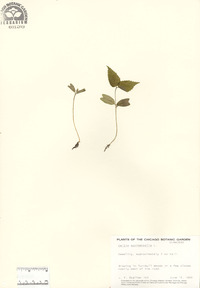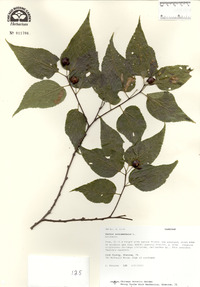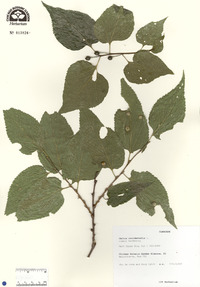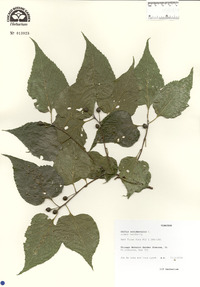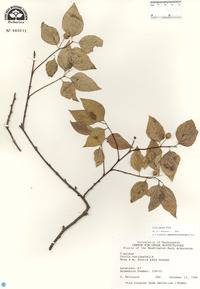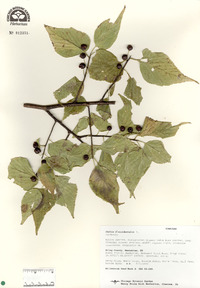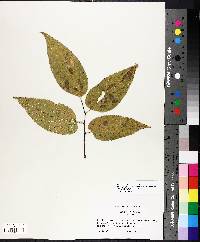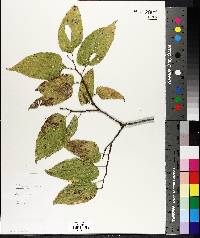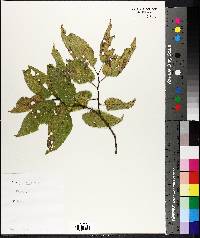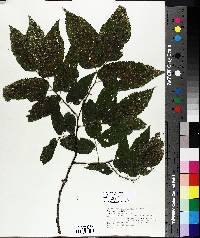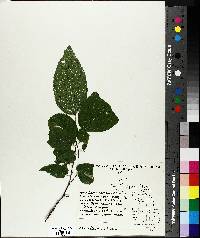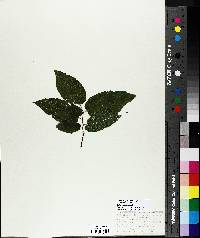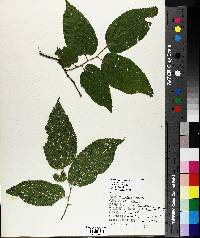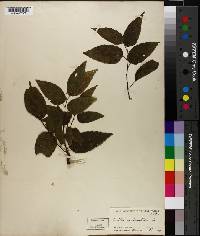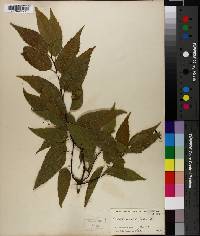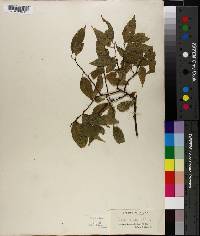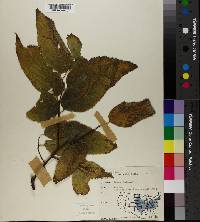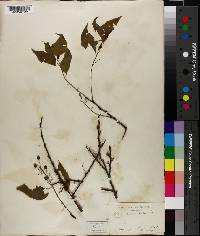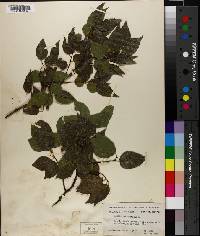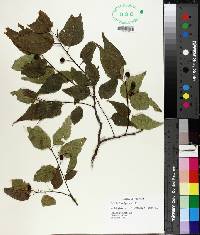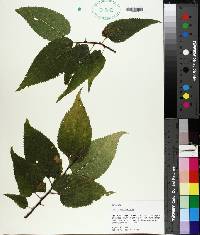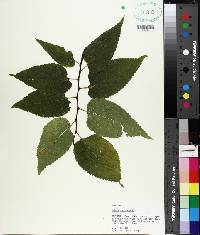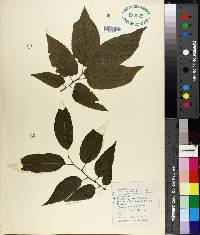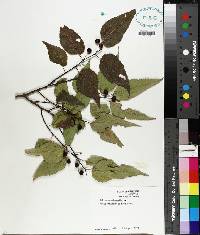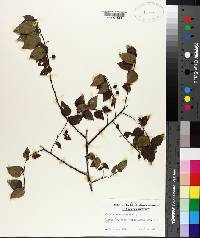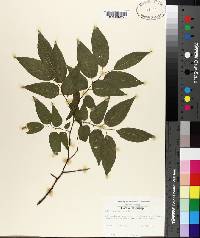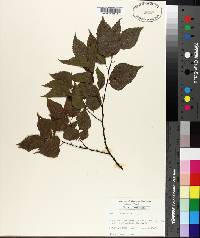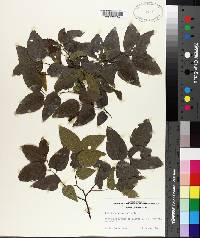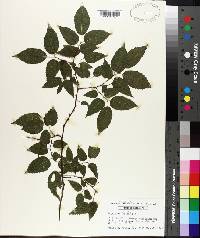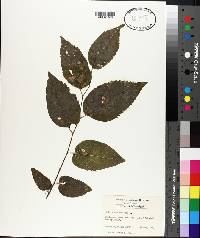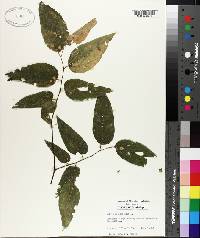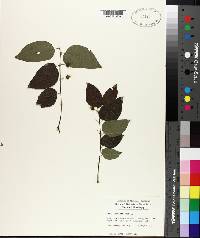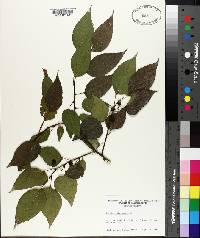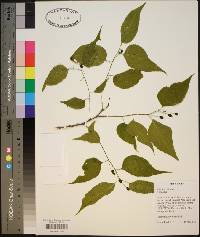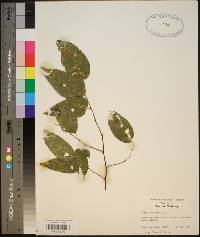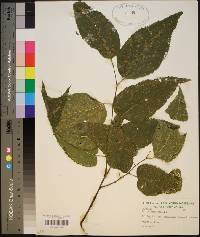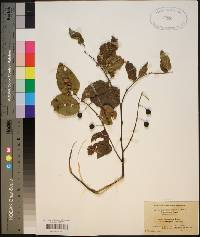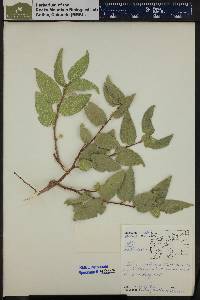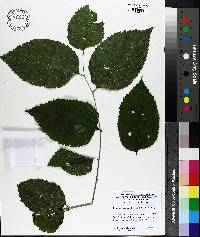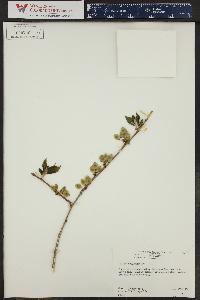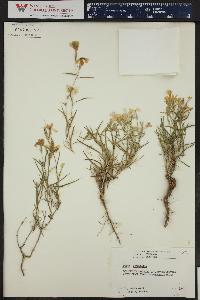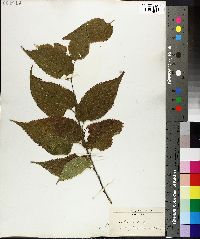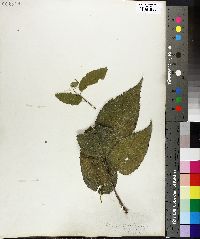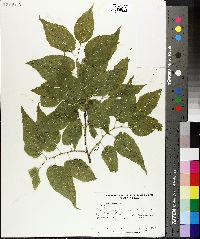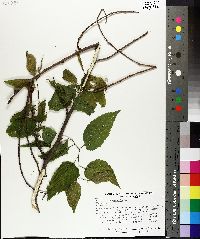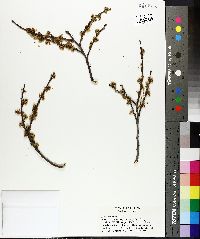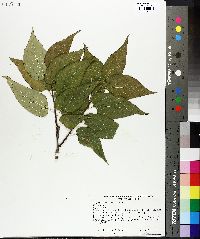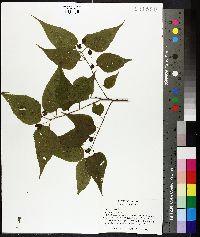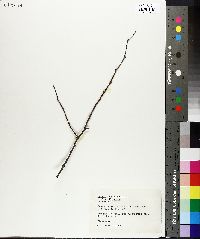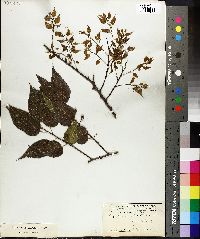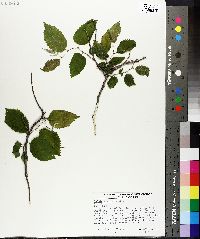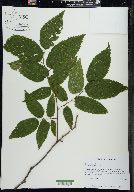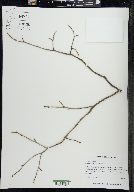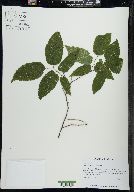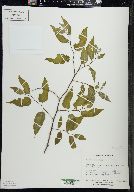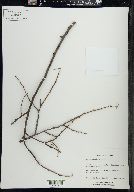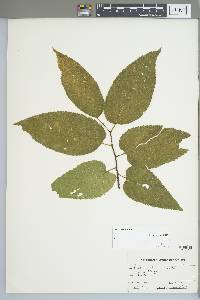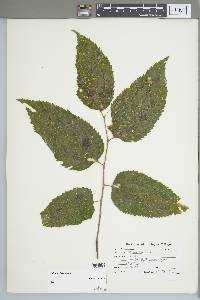
|
|
|
|
Family: Cannabaceae
Common Hackberry, more...western hackberry, dwarf hackberry
[Celtis canina Raf., moreCeltis floridana , Celtis longifolia Nutt., Celtis occidentalis var. canina (Raf.) Sarg., Celtis occidentalis var. cordata , Celtis occidentalis var. crassifolia , Celtis occidentalis var. integrifolia Nutt., Celtis occidentalis var. pumila (Pursh) A.Gray, Celtis pumila Raf.] |
Trees or shrubs , size varying greatly in response to habitat; crowns rounded. Bark gray, deeply furrowed, warty with age. Wood light yellow, weak. Branches without thorns, spreading, young branches mostly pubescent. Leaves: petiole 0.5-1.2 mm. Leaf blade lance-ovate to broadly ovate or deltate, 5-12 × 3-6(-9) cm (on fertile branches), leathery, base oblique or obliquely somewhat acuminate, margins conspicuously serrate to well below middle, teeth 10-40, apex acuminate; surfaces scabrous. Inflorescences dense pendulous clusters. Drupes dark orange to purple- or blue-black when ripe, orbicular, to 7-11(-20) mm diam., commonly with thick beak; pedicel to 15 mm. Stones cream colored, 7-9 × 5-8 mm, reticulate. 2 n = 20, 30, and 40. Flowering late winter-spring (Mar-May). In rich moist soil along streams, on flood plains, on rock, on wooded hillsides, and in woodlands; 0-1800 m; Man., Ont., Que.; Ala., Ark., Colo., Conn., Del., D.C., Ga., Ill., Ind., Iowa, Kans., Ky., Maine, Md., Mass., Mich., Minn., Miss., Mo., Nebr., N.H., N.J., N.Y., N.C., N.Dak., Ohio, Okla., Pa., R.I., S.C., S.Dak., Tenn., Tex., Vt., Va., W.Va., Wis., Wyo. Celtis occidentalis is valued as an ornamental street tree because of its tolerance to drought. Native Americans used decoctions prepared from the bark of Celtis occidentalis medicinally as an aid in menses and to treat sore throat (D. E. Moerman 1986). This is a highly variable species. Segregates named as varieties follow an east-west geographic gradient and are based primarily on leaf size, shape, and pubescence.
Medium-sized to large tree 12 - 24 m tall, trunk diameter 25 - 40 cm Leaves: alternate, with short, hairy leafstalks. The blade is shiny green above, paler with hairy veins beneath, 5 - 14 cm long, half as wide, and broadly lance-shaped with an asymmetrical, rounded or tapering base and long-pointed tip. It is also coarsely toothed (except near the base), thin, and smooth or somewhat rough on one or both surfaces. The veins form a lacelike pattern. In autumn the leaves turn light yellow. Flowers: either male or female, borne on the same tree (monoecious) in drooping clusters or solitary, greenish yellow, inconspicuous, without petals. Fruit: fleshy, single-seeded (drupe), borne on drooping stalks, dark purple, 7 - 13 cm long, nearly round, smooth, becoming puckered and prune-like. Pit wrinkled. Bark: gray or light brown, thin, smooth, becoming warty, rough, and scaly with age. Twigs: slender, gray to reddish brown, slightly zigzag, sometimes hairy, shiny. Leaf scars crescent-shaped with one to three bundle scars. Buds: light brown or gray, 3 - 6 mm long, slender, egg-shaped, pointed, finely hairy. Form: rounded with many spreading, slender branches. Similar species: Of the two Celtis species found in the Chicago Region, this one is much more common. Celtis tenuifolia differs by its smaller size; its smaller, lesser toothed, and short-tipped leaves; its 3 - 6 mm long fruit stalks; and its smaller, pinkish brown, smooth fruit. Also, the presence of hackberry nipple-gall and witches' broom is common on C. occidentalis. Note: Leaves may resemble those of Ulmus, but Celtis species have three main veins arising from the base of each blade. Flowering: mid-April to early May, after the leaves are partly grown Habitat and ecology: Frequent in moist woods, often in and along floodplains of streams. Occurence in the Chicago region: native Notes: The wood of Celtis occidentalis is used for furniture, fence posts, boxes, and crates. It is easily transplanted and valued as a lawn and park tree. A type of "witches' broom," caused by mites and fungi, is often seen on twigs throughout the crown, and nipple-galls are common on the leaves. Etymology: Celtis is the Greek word for the hackberry tree (hackberry is actually a corruption of the Scottish name Hagberry, a species of cherry tree). Occidentalis means "of or from the West." Author: The Morton Arboretum Commonly 6-15(35) m, tending to form a symmetrical, openly branched tree; lvs dark green above, paler beneath, lance-ovate to broadly ovate or deltoid, those of the fertile branches 6-12 cm, conspicuously serrate, abruptly acuminate to very long-acuminate, oblique at the base, one side (seldom both) generally ±strongly cordate, varying from thin and smooth to firm, impressed- veiny and scabrous above, and pubescent beneath, as in the next sp.; major areoles (between the primary lateral veins) usually 5-8 on each side; style tardily deciduous, ±persistent on the developing fr; fr ellipsoid to subglobose, 7-13 mm, dark red to nearly black, sweet and tasty, on a pedicel (7-)10-20(-25) mm that usually notably surpasses the subtending petiole; stone conspicuously pitted. Usually in moist, rich soil, often on floodplains; s. Que. to s. Man., s. to Va., Ark., and Okla., and locally to N.C., Ga., Ala., and Miss. Highly variable, but not clearly divisible into vars. (C. canina; C. crassifolia) Gleason, Henry A. & Cronquist, Arthur J. 1991. Manual of vascular plants of northeastern United States and adjacent Canada. lxxv + 910 pp. ©The New York Botanical Garden. All rights reserved. Used by permission. From Flora of Indiana (1940) by Charles C. Deam [Trees with narrow, long-attenuate leaves and smooth upper surfaces, called var. canina are] no doubt found in every county of the state. This variety prefers the moist, alluvial soil along streams but is sometimes found in sandy upland and on wooded slopes. It is rare in northern and southern Indiana but frequent along our major streams. It is infrequent to rare in low woods at a distance from a stream. This is the common hackberry in the state. This form [var. crassifolia has rough upper leaf surfaces and] is found probably throughout the state with the preceding but is rare or infrequent. I am not convinced that this variety has any standing. I have found both smooth and rough leaf forms on the same tree. Undoubtedly mere roughness of leaves has little significance. ...... Indiana Coefficient of Conservatism: C = 3 Wetland Indicator Status: FAC Deam (1932): The wood is yellowish-white and before seasoning very much resembling ash for which itis generally sold. It has good bending qualities and is now much sought after for hoops. It was formerly known a hoop ash. |
|
|
|

